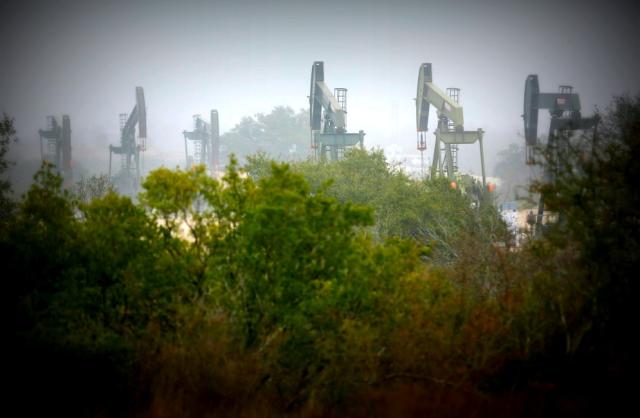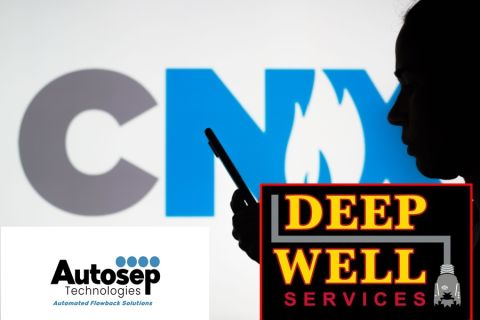
Pump jacks work in Atascosa County near Campbelltown, Texas, in early 2018. (Source: Tom Fox/Hart Energy)
The slowdown in the A&D market along with moderating commodity prices and repercussions from the most recent downturn have permanently changed the outlook for both public and private players in the upstream oil and gas industry.
A mid-February note from Tudor Pickering & Holt & Co. (TPH) discussed the overall “health” of private E&Ps, which, ever since the portfolio-crushing downturn of ’14, have had to shift their models—particularly their exit plans. In fact, today it’s hard to identify a typical timeframe for build-up, hold and sell for private E&P companies. Similarly, the publics must also be more cautious and measured in their approach now, as investors demand lower debt, more free cash flow and less risk.
RELATED: Quantum CEO: Welcome To Shale 3.0
“All signs point to a lack of visibility on exit strategies [for private E&Ps] and the need to shift business models—enter the super privates,” the firm said.
The TPH team observed that with the pressure now on public companies to produce free cash flow and to “moderate growth,” private companies may no longer fit the bill as acquisition candidates unless they have also changed their models
“This likely means a cut to activity to slow growth, mergers to create productive scale, cuts to overhead and line of sight to free cash flow while preserving undeveloped inventory for potential exit long term,” the firm said noting it estimates productive scale at 1.5 billion cubic feet per day for gas companies or 50,000 barrels per day for oily drillers.
In looking at the broader implications for the upstream industry, with many having reported fourth-quarter 2018 earnings, TPH said that “it’s clear that capital cuts have been steeper than initially envisioned.”
RELATED: E&P Earnings Recap: Mixed Results From Anadarko Petroleum, Oxy, Others
Thus, the team looks for a 13% drop in drilling for the 2019 average vs. the year previous. This combined with the stricter spending guidelines announced by public companies in their recent earnings reports could eventually slow production, lower service costs and in turn raise prices…repeating a cycle that has been a familiar one through the years.
The TPH analysis observed that as rigs start to “precipitously fall” over the coming months, and activity levels drop across the industry, this “could create additional tailwinds on cost going forward.”
In additional upstream trends analysis, TPH analysts focused attention in late February on the recent announcements of pared general and administrative (G&A) expense by companies such as Devon Energy Corp. (NYSE: DVN) and QEP Resources Inc. (NYSE: QEP). After looking at G&A expense in relation to a variety of metrics, TPH said that investors’ focus on this expense may continue.
“Ultimately, low-cost operators like FANG [Diamondback Energy Inc.] and CLR [Continental Resources Inc.] are driving top-tier margins by continuing to focus on this expense line item year in and out, but there is a wide rift in metrics between industry participants, and ultimately investors may require higher-cost producers to pull in line with their lower-cost peers,” TPH said.
The firm estimates Diamondback’s G&A per rig in 2019 at roughly $3 million and Continental’s at $6 million. This, TPH added, results in less than 1% G&A/market cap and less than 5% G&A/EBITDA for both companies.
Devon announced it would sell its Barnett and Canadian oil sands holdings as well as make other cost reductions. Additionally, QEP said it would reduce its G&A expenses by about 45%, when comparing 2018 to 2020, with most reductions during the first half of this year.
The belt-tightening can only continue.
Recommended Reading
Deep Well Services, CNX Launch JV AutoSep Technologies
2024-04-25 - AutoSep Technologies, a joint venture between Deep Well Services and CNX Resources, will provide automated conventional flowback operations to the oil and gas industry.
EQT Sees Clear Path to $5B in Potential Divestments
2024-04-24 - EQT Corp. executives said that an April deal with Equinor has been a catalyst for talks with potential buyers as the company looks to shed debt for its Equitrans Midstream acquisition.
Matador Hoards Dry Powder for Potential M&A, Adds Delaware Acreage
2024-04-24 - Delaware-focused E&P Matador Resources is growing oil production, expanding midstream capacity, keeping debt low and hunting for M&A opportunities.
TotalEnergies, Vanguard Renewables Form RNG JV in US
2024-04-24 - Total Energies and Vanguard Renewable’s equally owned joint venture initially aims to advance 10 RNG projects into construction during the next 12 months.
Ithaca Energy to Buy Eni's UK Assets in $938MM North Sea Deal
2024-04-23 - Eni, one of Italy's biggest energy companies, will transfer its U.K. business in exchange for 38.5% of Ithaca's share capital, while the existing Ithaca Energy shareholders will own the remaining 61.5% of the combined group.




